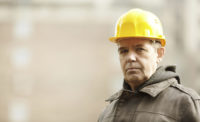With a large number of kids using ear buds and headphones, noise-induced hearing loss is a serious issue, according to the American Speech-Language-Hearing Association (ASHA).
Last year, the World Health Organization estimated 1.1 billion teenagers and young adults are at risk of hearing loss due to the unsafe use of personal audio devices, including smartphones, and exposure to damaging levels of sound at noisy entertainment venues such as nightclubs, bars, and sporting events.
The ASHA recently brought its initiative—the Listen To Your Buds concert series -- to six Philadelphia schools. The campaign brings in award-winning musicians to elementary schools to teach kids about the importance of using technology safely to protect their hearing for the rest of their lives.
Experts suspect that noise-induced hearing loss is a growing problem with the increasing popularity of personal tech devices. Noise-induced hearing loss is completely preventable, but once it occurs, it is irreversible. With the Buds campaign, the idea is to get the safe listening message to younger children before they start to develop the bad habits with technology—like cranking the volume for hours on end.
The message is simple. When listening to devices, number one: turn the volume down. Number two: give your ears a rest by taking listening breaks.
Even so-called “minimal or mild” hearing loss can have a significant impact on children. Children with hearing loss may have difficulty with all areas of academic achievement, especially reading and math. Children with mild to moderate hearing loss achieve one to four grade levels lower, on average, than their peers with normal hearing, unless appropriate management occurs.
Parents need to model safe listening behavior themselves. It’s also important that parents educate themselves about the signs of hearing loss so that any hearing issue can be addressed early—when the negative consequences can be minimized through speedy intervention.
There are many products available to help parents protect their children’s hearing. These include earplugs and earmuffs designed to protect hearing in loud sound environments as well as earphones and headphones that limit the volume levels to reduce the risk for hearing loss. Their appropriate use requires that the child understands the dangers of loud sound and that they are at risk of noise-induced hearing loss.
Source: www.philly.com



